Historical places in Victoria transport you back in time, with decades of colonial and Aboriginal history. From grandiose castles to elegant precincts, these sites are testimony to the cradle of British Columbia’s government, culture, and nature exploration. Wandering through these storied landmarks, you’ll feel the city’s enduring spirit and how its heritage continues to shape life today. Victoria isn’t just a provincial capital, but an open‑air chronicle where every structure tells a tale, making it a must for history enthusiasts and heritage lovers.
10 Historical Places To Visit In Victoria
Historic places of Victoria are not just memorials, but living histories of the city’s civic pride, cultural richness, and political growth, retaining its spirit of yesterday and today.
1. Parliament Buildings
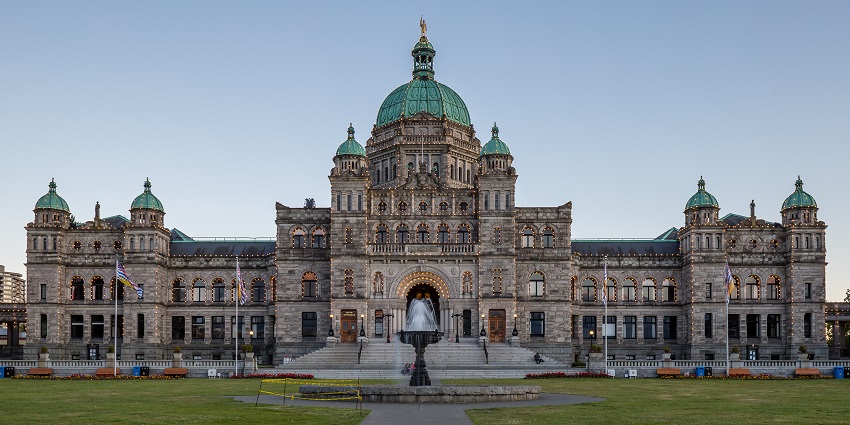
Photo: Michal Klajban / Wikimedia Commons
The Parliament Buildings of Victoria are a shining testimonial to British Columbia’s political and architectural heritage. Piercing the Inner Harbour views, these impressive neo-baroque and Renaissance Revival buildings were constructed by fledgling architect Francis Rattenbury and completed in 1897. Since then, the buildings have housed British Columbia’s Legislative Assembly. The facade features intricate stonework, columns, and statues, along with an impressive central dome topped with a statue of Captain George Vancouver as a cityscape landmark.
Location: Belleville Street
Major Attractions: Assembly Chamber, Memorial Rotunda, grounds with Cenotaph and totem
2. Craigdarroch Castle
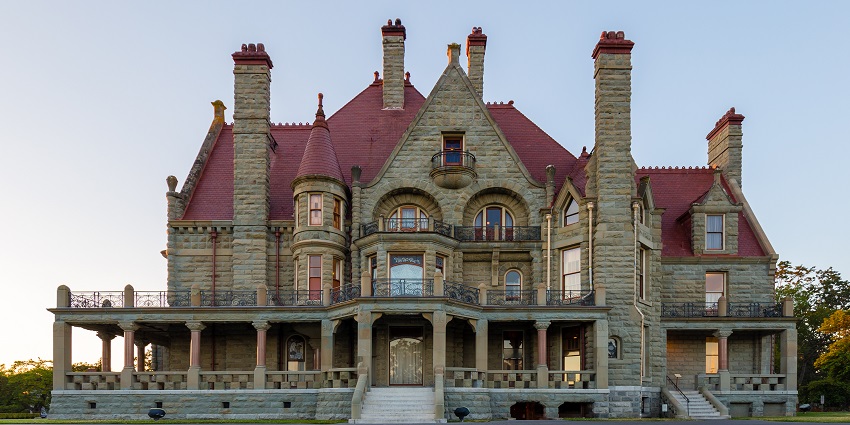
Photo: Michal Klajban / Wikimedia Commons
Victoria’s most romantic and historically important landmark, Craigdarroch Castle, was built between 1887 and 1890 for wealthy coal baron Robert Dunsmuir. The grand Scottish baronial mansion is a breathtaking exercise in Victorian-era architecture. With its intricately carved stonework, tall turrets, and elegant style, the castle exudes centuries-old flair. Inside the walls, visitors are ushered in by 39 lavishly refurbished rooms that abound with authentic furniture, ornate woodwork, exquisite stained glass windows, and a staggering collection of period artefacts.
Location: Joan Crescent
Major Attractions: Great staircase, library, stained glass windows, views from the turret
How To Reach: Take a bus to Craigdarroch Castle
3. The Empress Hotel
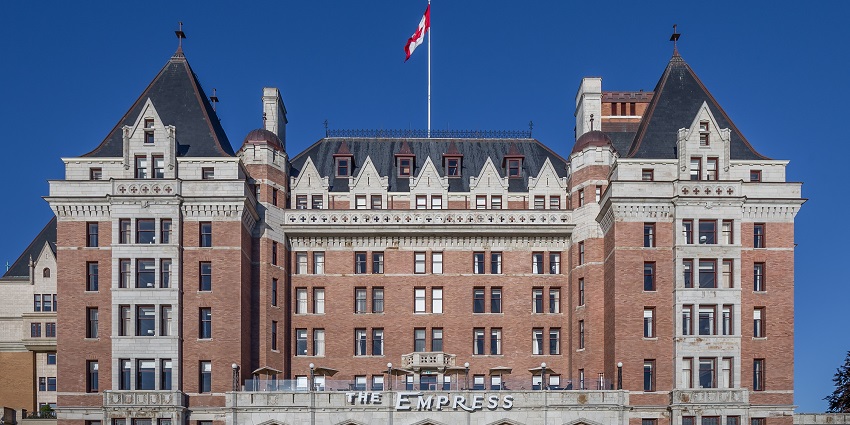
Photo: Michal Klajban / Wikimedia Commons
The Fairmont Empress Hotel, built in 1908, is perhaps the most symbolic and decadent of Canada’s heritage hotels. Designed by architect Francis Rattenbury in the opulent Châteauesque style, the Empress quickly became the epitome of Victorian beauty and excess. Sitting on a bluff above Victoria’s Inner Harbour, the Empress has welcomed royalty, stars, and dignitaries for over a century. Its stern façade, ivy-covered walls, and turreted appearance evoke an era past. Inside, the hotel’s luxurious wood panelling, crystal chandeliers, and antique furnishings retain the style of the early 20th century.
Location: 721 Government Street
Major Attractions: High Tea, miniature worlds exhibit, heritage lobby
4. Royal BC Museum
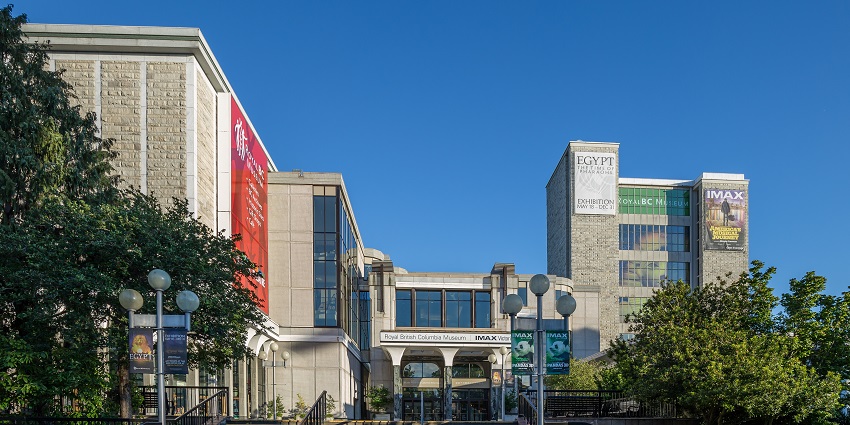
Photo: Michal Klajban / Wikimedia Commons
The Royal BC Museum, established in 1886 and later amalgamated with the Provincial Archives, is Victoria’s most important historic site. Located near the Inner Harbour, the museum contains an impressive collection of approximately 7 million specimens and artefacts. It offers a vibrant and engaging glimpse of British Columbia’s human and natural past, with particular emphasis on Indigenous peoples and the province’s ecologically diverse heritage. Its permanent exhibitions are meticulously crafted, featuring life-sized dioramas, historical reconstructions, and interactive presentations that stretch centuries back from prehistory to modern BC.
Location: Belleville Street
Major Attractions: First Peoples Gallery, Becoming BC, natural history displays
5. St. Andrew’s Cathedral
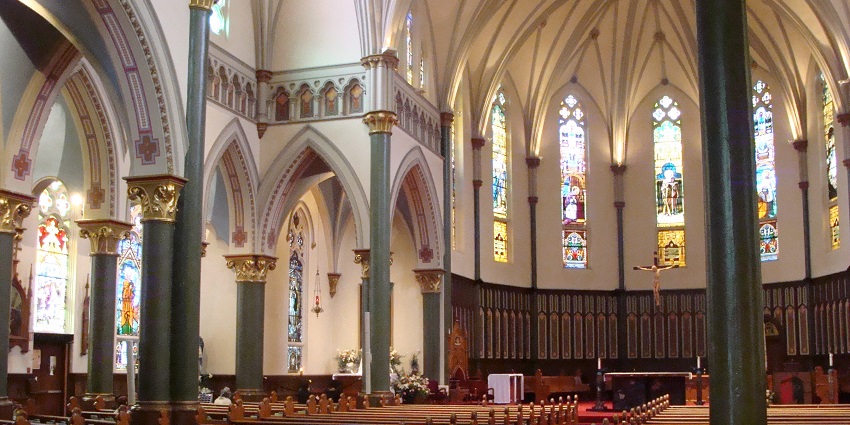
Photo: Iota 9 (talk) / Wikimedia Commons
St. Andrew’s Cathedral is a stunning example of High Victorian Gothic architecture, which was built between 1890 and 1892. It is among the most significant historic sites in Victoria. Located in the middle of Victoria, this majestic cathedral features distinctive twin asymmetrical towers that reach high into the sky, creating a striking and symbolic outline. Its rose window of monumental proportions and intricate stained glass designs introduces dynamic colour and symbolic religious meaning into the holy interior. St. Andrew’s Cathedral, as a National Historic Site, is not just a place of worship but a greatly cherished icon of religious artistry and architectural beauty.
Location: 740 View Street, Victoria, British Columbia
Major Attractions: Italianate façade, period details, beautiful gardens
6. Emily Carr House
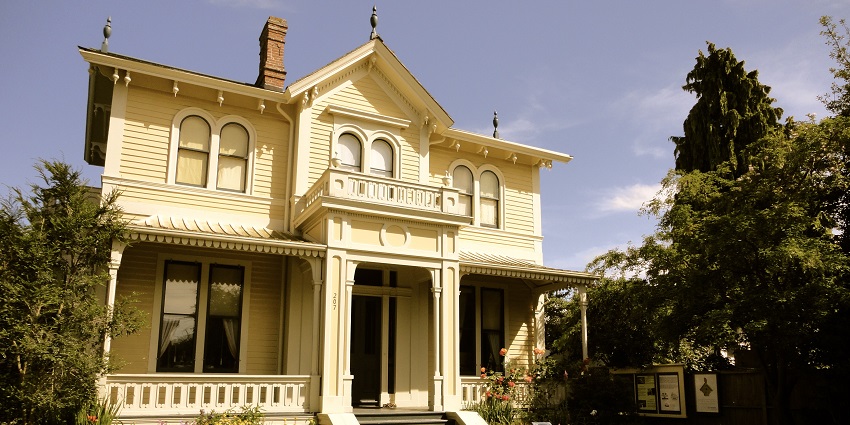
Photo: Mattlapointe / Wikimedia Commons
Emily Carr House, constructed between 1863 and 1864, is a quaint Italianate-style house that was the childhood residence of one of Canada’s most renowned artists, Emily Carr. This historic home in Victoria was carefully maintained as a museum dedicated to showcasing Carr’s formative years and artistic heritage. Designated as a National Historic Site in 1964, the home provides tourists with an unusual glimpse into the environment that influenced her imagination and passion for documenting the natural beauty of British Columbia. Inside, the museum holds period pieces and personal items that resonate with the time and Carr’s home life.
Location: 207 Government Street
Major Attractions: Period interiors, art centre, garden
7. Helmcken House
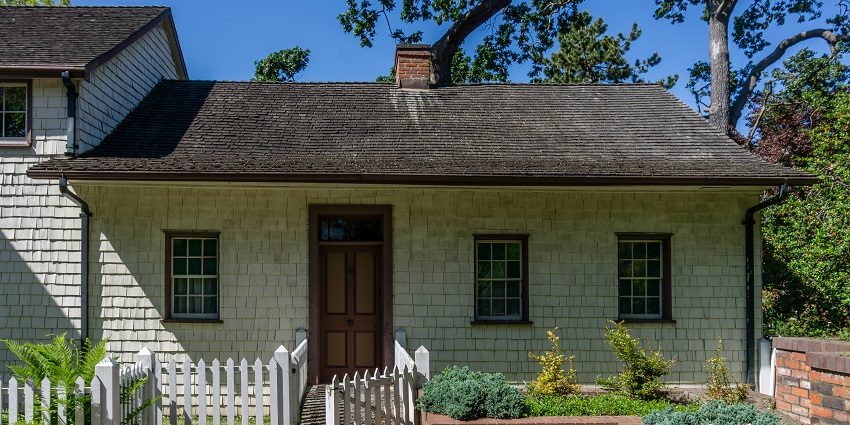
Photo: Michal Klajban / Wikimedia Commons
Helmcken House, built in 1852, is among the oldest surviving residences in British Columbia and is one of the oldest remaining homes in British Columbia and is extremely historically significant. This timber-frame house provides a glimpse into colonial life during the mid-19th century. Restored with great attention to detail and opened to the public in 1955, the house still contains original rooms, furniture, and period artefacts that describe the living conditions and social customs of the time.
Location: Humboldt Street
Major Attractions: Architectural pieces from the colonial era, historical furniture
8. Ross Bay Cemetery
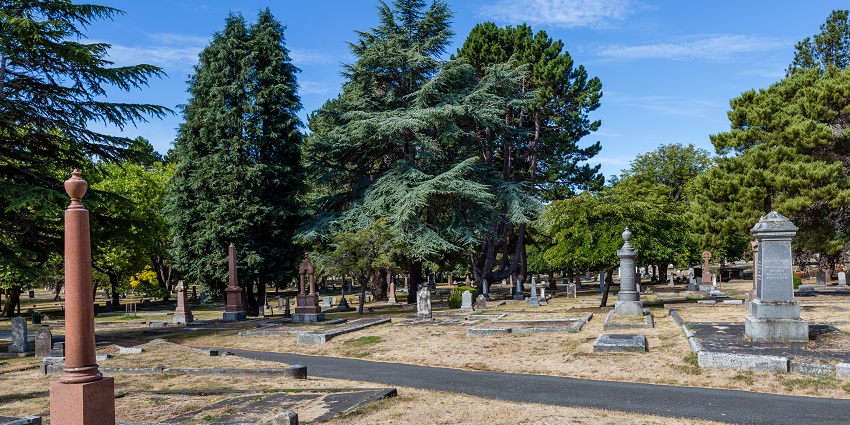
Photo: Michal Klajban / Wikimedia Commons
Ross Bay Cemetery, established in 1873, is Victoria’s most historically significant cemetery. The graveyard holds the remains of some of British Columbia’s earliest history’s most notable figures, including renowned artist Emily Carr and Sir James Douglas, the colony’s first governor. It has lovely Victorian-style gravestones, mausoleums, and tall trees, all of which constitute a serene and reflective atmosphere. Wandering its quiet paths gives visitors a valuable experience of connecting Victoria’s colonial history with the strong lives that rest there. The place is not only sacred for its historical value but also as a place of calm contemplation and remembrance.
Location: Fairfield Road, near the coastline
Major Attractions: Historic graves, Victorian headstones, heritage trees
9. Fort Rodd Hill & Fisgard Lighthouse
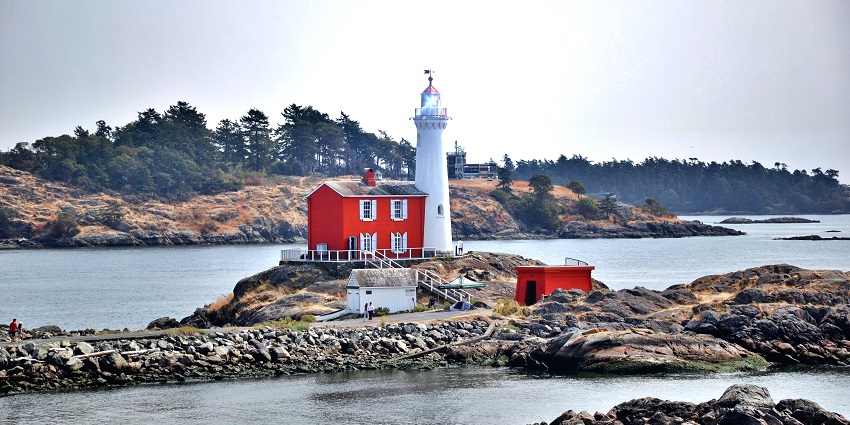
Photo: Sarena D / Wikimedia Commons
Fort Rodd Hill and Fisgard Lighthouse are two national historic sites that are renowned icons and collectively represent a very interesting history regarding Canada’s maritime and military heritage. Fort Rodd Hill is a restored 19th-century coastal artillery fort built to protect Victoria and its surroundings from naval invasion. Its gun batteries, tunnels, and buildings are available for the public to tour, discovering military life and coastal defence methods during its era. It stands near Fisgard Lighthouse, the initial one along the Pacific coast for Canada, that guided ships safely through the oftentimes treacherous waters since 1860 with its beam.
Location: Esquimalt Harbour
Major Attractions: Fort buildings, lighthouse, tide pools
10. Hatley Castle
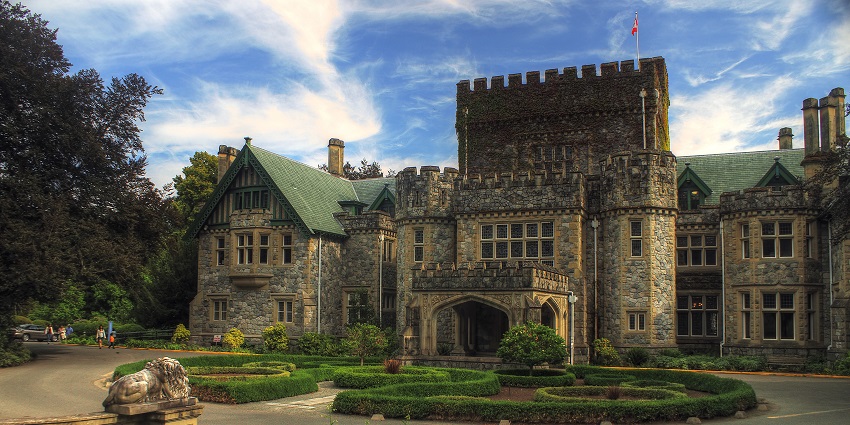
Photo: Brandon Godfrey / Wikimedia Commons
Standing over the campus of Royal Roads University, Hatley Castle is a beautiful Edwardian chateau built in 1908 by James Dunsmuir. It is a beautiful testament to the prosperity and elegance of early 20th-century British Columbia. This magnificent castle is a part of Royal Roads University today and is supplemented by exquisitely well-kept formal Italian and Japanese gardens, which enhance its grand architecture and peaceful grounds. The castle is made available to the public for guided tours, through which individuals get to enter its richly decorated interior areas and expansive grounds.
Location: Hatley Park shoreline
Major Attractions: Castle, gardens, university museum
Historical places in Victoria, from the Gothic cathedrals to castle-like mansions and harbour-side forts, all tell rich tales of British Columbia’s history from a colonial outpost to a prosperous modern capital. Visitors stroll through its heritage districts and experience the living histories of the Native heritage. Each of its landmarks tells stories of cultural and political layers of history. Book your trip today with TripXL for an unforgettable experience of Victoria’s past and its enduring legacy.
Cover Photo: Ikiwaner / Wikimedia Commons


 WhatsApp
WhatsApp
 Twitter
Twitter









